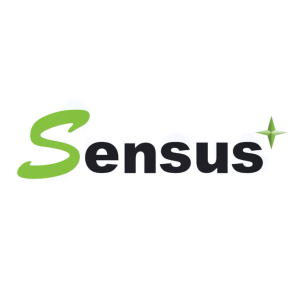Welcome to our dedicated page for Sensus Healthcare SEC filings (Ticker: SRTS), a comprehensive resource for investors and traders seeking official regulatory documents including 10-K annual reports, 10-Q quarterly earnings, 8-K material events, and insider trading forms.
Locating FDA milestones, clinical trial updates, and recurring revenue details inside Sensus Healthcare’s dense SEC documents can feel like dissecting a treatment manual. When a single 10-K hides segment margins for SRT device sales and a late-night 8-K moves the stock on new reimbursement codes, missing a line item could cost you clarity—or capital. Stock Titan solves this problem by distilling every Sensus Healthcare filing into plain-English highlights the moment it hits EDGAR.
Our AI-powered summaries cut through medical jargon so you immediately grasp how a fresh 10-Q affects device deployment trends or why an 8-K material event matters to future cash flow. Need real-time Sensus Healthcare Form 4 insider transactions? We alert you as executives buy or sell shares, helping you track Sensus Healthcare insider trading Form 4 transactions before the market reacts. Want the full picture? Access every form in one feed—10-K, 10-Q, 8-K, DEF 14A, and Section 16 filings—each tagged with expert notes, key metrics, and cross-links to historical data.
Whether you’re comparing quarter-over-quarter keloid treatment revenue, studying Sensus Healthcare proxy statement executive compensation, or just looking for a Sensus Healthcare annual report 10-K simplified, our platform answers the questions investors actually ask: "How do I read Sensus Healthcare’s earnings report filing analysis?" or "Where can I find Sensus Healthcare quarterly earnings report 10-Q filing?" From Sensus Healthcare 8-K material events explained to "understanding Sensus Healthcare SEC documents with AI," Stock Titan delivers comprehensive coverage and context so you can act with confidence.
Sensus Healthcare, Inc. completed a Form S-8 registration related to an employee benefit plan, filing corporate governance provisions including indemnification and the company’s ability to purchase insurance for directors and officers. The filing confirms that directors and officers may be indemnified for expenses, including attorneys’ fees, when successful in defense of covered actions, and that such indemnification is in addition to other rights under bylaws or agreements. Signatures from executive officers, including Joseph C. Sardano (Chief Executive Officer) and Javier Rampolla (Principal Financial and Accounting Officer), appear on the document.
Michael Sardano, who serves as a director and as President and General Counsel of Sensus Healthcare, Inc. (SRTS), reported a purchase of 1,000 shares of the company's common stock on 08/13/2025 at a reported price of $3.37 per share. After the transaction, his reported direct beneficial ownership totaled 116,839 shares. The Form 4 lists the transaction code as "P" and shows the change as an acquisition.
Sensus Healthcare reported weakening sales and compressed margins in the quarter and year-to-date. Revenue was $7.3 million in Q2 and $15.7 million for the six months, declines of 20.7% and 21.1% versus prior-year periods driven primarily by fewer units sold to a large U.S. customer. Gross profit fell to $2.9 million in Q2 and $7.3 million YTD, and gross margin narrowed to 39.7% for the quarter (from 58.7%) and 46.5% YTD (from 60.8%).
Higher operating expenses outpaced revenue reductions: G&A, selling and marketing, and R&D all increased, with R&D up 127.8% YTD due to lobbying, added headcount and next-generation product development. The company recorded a net loss of $1.037 million in Q2 and a $3.609 million net loss for the six months, compared with net income in the prior-year periods.
Liquidity remains a stabilizing factor: cash and cash equivalents were $22.2 million and the amended revolving credit facility provides $15.0 million of available borrowing capacity with no outstanding borrowings, and the company was in compliance with credit covenants. Material risks disclosed include significant customer concentration (one U.S. customer represented 56% of Q2 revenue and 78% of receivables) and an ongoing DOJ inquiry for which potential costs cannot be estimated.


